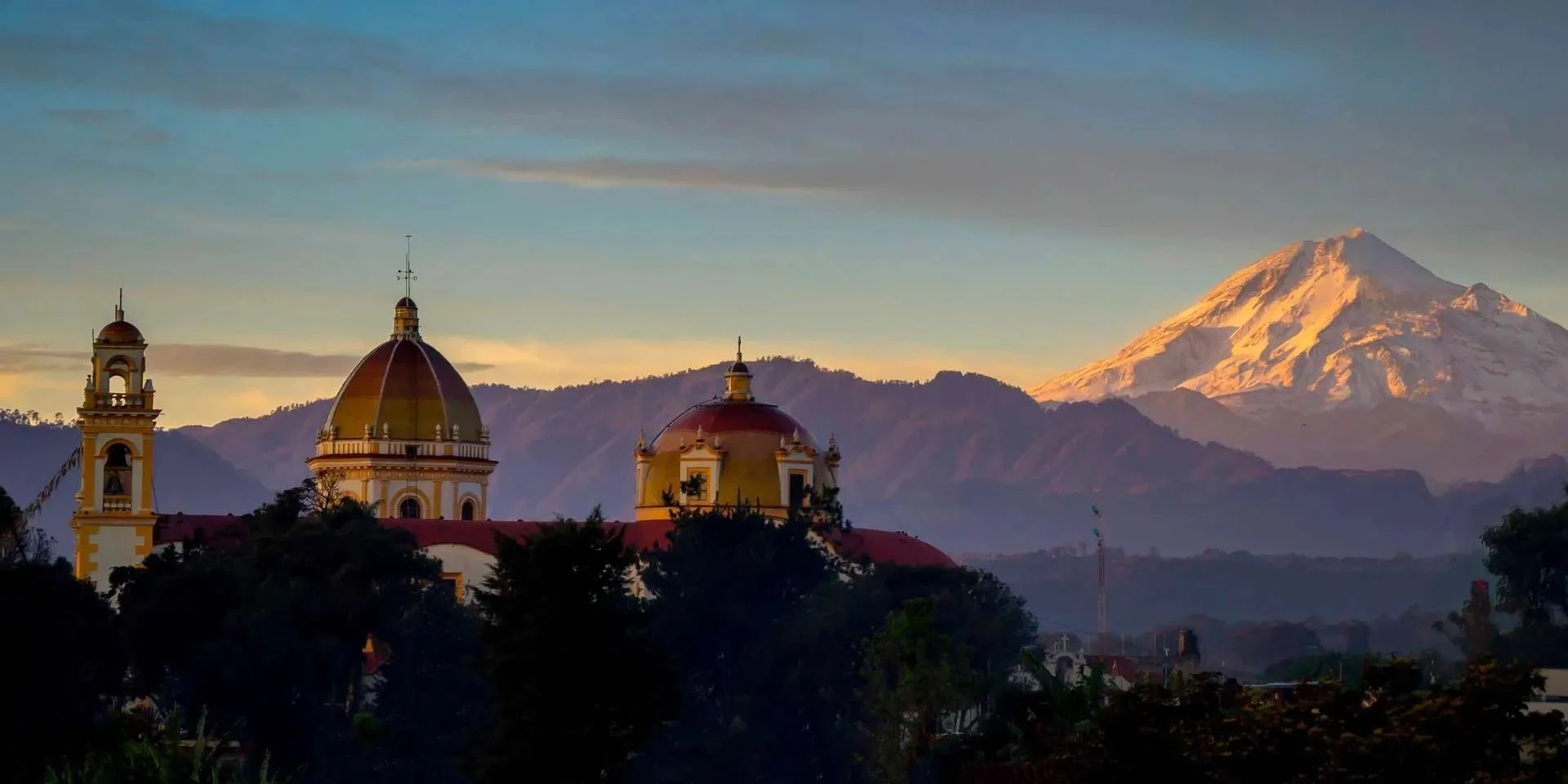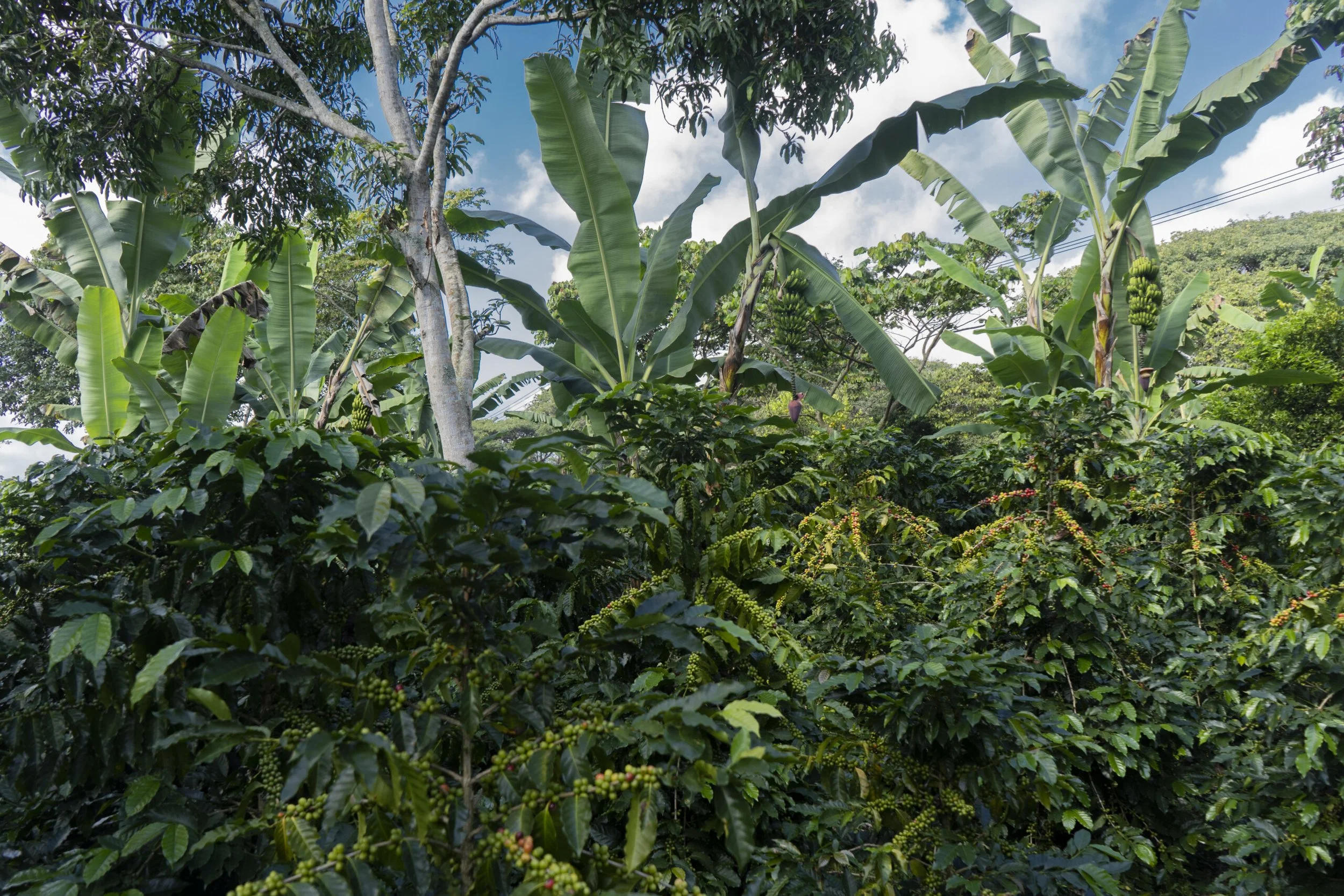About the Producers
Mafafas is a town in the municipality of Tepetlán in Veracruz, Mexico. It’s located at 1350 meters above sea level and is made up of small "ejidos," towns made up of 30-50 people. To get there we first have to fly to the Veracruz airport, then drive via a well-maintained road for 3.5 hours. This route only gets complex in rainy weather.
Mafafas’s farms are slightly larger than the surrounding areas we work in (although still very small), with an average lot size that is between 3-6 hectares per producer. It’s always been a coffee-growing area, but in recent years many coffee growers have shifted their trade towards livestock. This is because Mafafas is further north than the rest of the coffee growing towns, making it more susceptible to cold northern winds. 4 years ago, these cold winds caused a devastating frost over much of this community, killing off most of the coffee plants. As a result, Mafafas’s coffee plants are either younger or smaller due to large-scale pruning than those further south.
Mafafas has a unique microclimate. In a matter of minutes it can shift from moderate heat to intense cold due to the altitude and northern winds. These drastic changes mean that producers have to adapt their farms with a specific array of shade trees and companion crops depending on their specific farm conditions.
Between 1350 and 1500 masl, producers have flatter lands, larger farms, and a more technical approach. In this area, the primary native shade tree and companion plant is the leguminous ice-cream bean tree. For fertilizer, they mostly use Yara (a commercially available fertilizer) either alone or mixed with organic fertilizers. In areas from 1500 to 1800 masl, the farms become smaller, with a more artisanal approach and primary shade from oak and pine trees. Up there, producers use organic fertilizers like homemade compost and chicken manure.
As in all of Veracruz, the producers harvest the coffee in cherry. It’s then transported to the central processing plant in Coatepec (about 2 hours away). Most farms in Mafafas have access to roads, so they can use cars or trucks rather than mules.
About the Processing
In the central processing plant, they use spring water to wash the cherry, which they then ferment for 48 hours in concrete tanks, followed by mechanical drying for 60 hours.
Price
The FOB price for this lot was $4.01. [FOB price is the total price of the coffee up to the point of departure from the country; it includes farmgate/price paid to the grower, in-country transportation, and the cost of processing and preparation for export. It does not include the price of freight to the US, US warehousing, US customs charges, or the cost of moving coffee with the US.]
During the harvest season from October through November, the New York C price for coffee was an average of $3.74; the $4.01 FOB price for this coffee includes a significant premium for the farmer above the C market price, which reflects the excellent quality of this coffee. After being imported to a warehouse in the consuming country, the United States, the coffee cost was $5.85/lb. The cost of the shipping from the warehouse to our roastery made our final green price $6.00.
Avg. C Price (at the time of harvest): $3.74
F.O.B Price: $4.01
Ex-Warehouse: $5.85
Final Green Price: $6.00
Read more about terminology, definitions and Whiptail’s Transparency mission here.






